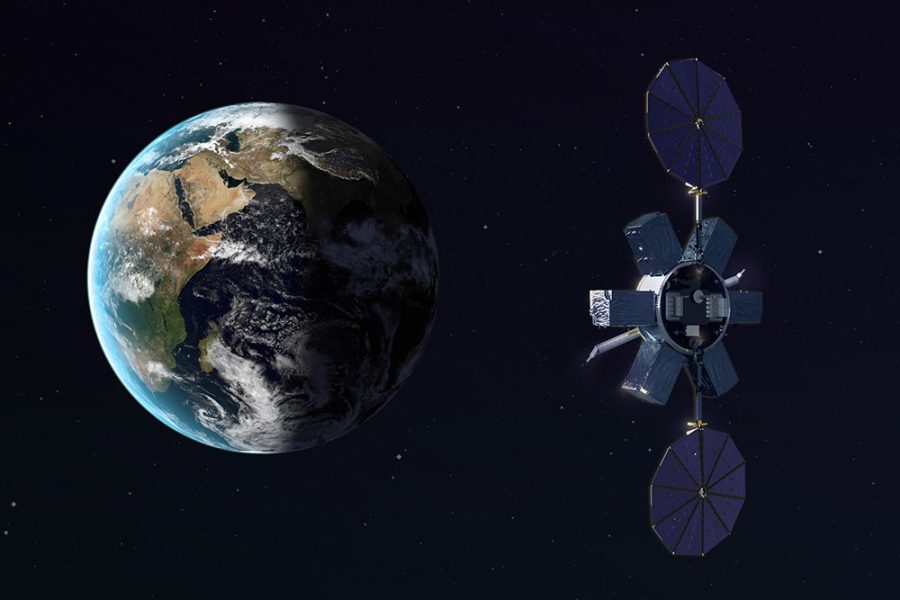The Space Force expects to award $905 million in contracts over the next five years through a new Maneuverable GEO program, which aims to form a commercial fleet of communication satellites that can shift around in geosynchronous orbit.
The projection is part of the Commercial Satellite Communications Office’s fiscal 2026 forecast to industry, an annual document that lays out requirements and contract opportunities within CSCO, which is responsible for procuring commercial SATCOM for the entire military.
Released Oct. 23, the 2026 forecast lists seven programs with contracts valued at up to $1.1 billion. The Maneuverable GEO effort is, by far, the largest of the bunch.
Air & Space Forces Magazine reported earlier this month that the service plans to open competition for the program in early 2026, and CSCO said in its forecast it expects a contract award by June 2026.
Officials have been touting the need for a program to leverage maneuverable GEO-based satellite services, discussing the requirement publicly on several occasions over the last year.
“That’s going to be a game-changer for us in the military, where you’re not at a stagnant orbit, and you’re able to drift from point to point, especially supporting us in the event of a regional or national war so that we can maneuver more of our capabilities to be more agile to the warfighter,” Col. Rich Kniseley, former director of the Commercial Space Office, told reporters in September 2024 at AFA’s Air, Space & Cyber Conference.
The Space Force plans to establish a pool of contractors with mobile satellites in GEO that can provide commercial SATCOM capabilities and a range of other services. Importantly, the satellites should be able to maneuver to other orbital slots to provide better regional coverage or away from potentially damaging debris.
“Combined with the need to supplement aging military satellite resources, the ability to provide these types of smaller, quicker satellite builds with maneuvering capabilities that are capable of providing access to, in particular, scarce military frequency bands is paramount to successfully supporting DOD operations and communications needs,” the service said in a Sept. 15 notice.
USSF had planned to award a contract for Maneuverable GEO last July, listing the program in CSCO’s fiscal 2025 forecast, but the effort was delayed. The dollar amount, however, has not changed.
Beyond that program, the forecast includes an Air Combat Command requirement for counterdrug surveillance of the United States, South America, Central America, the Caribbean Basin, and the Gulf of Mexico. CSCO expects a contract award in January worth up to $10 million over four years.
The document also lists three potential contracts, each valued at between $35 million and $45 million, for commercial SATCOM support. Two of those would support Air Force Central Command, and one would serve U.S. Customs and Border Protection.
Another $63 million contract would provide SATCOM services for Coast Guard aircraft, and a $650,000 award would support the Mobile Unmanned Vehicle Command and Control Center.


